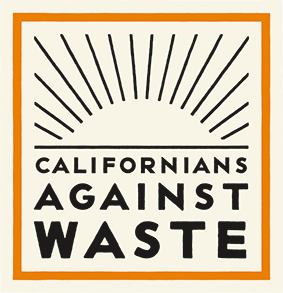California Bottle Bill: 2011 Wrap Up
Several changes and updates to report for our 2011 Wrap Up regarding California’s Beverage Container Recycling Act (the Bottle Bill):
By the Numbers:
• Better than 16 billion containers were recycled(82% of those sold--more than one million tons) in the fiscal year ending June 30 (Aluminum 96%; Glass 85%; Plastic 68%).
• The program remains 100% self-sufficient, and the most cost effective in North America, with 98.7% of funding coming from CRV, and an additional 1.3% coming from supplemental ‘processing fees’ on beverage producers.
• Roughly 74% of program funds are returned to consumers as ‘Refund Values’.
• Overall, the program provided nearly $300 million to California’s recycling infrastructure—including $135 million for local governments and curbside recycling—no recycling program in the country comes close to matching this.
• While continuing to achieve the program objective of 80 percent or better recycling for the year, total net program costs (to producers and consumers) were fully offset by market scrap values, returning a net benefit of $44 million to the State’s economy, and providing more than 26,000 jobs.
Leadership. In October, Governor Jerry Brown appointed recycling policy guru Caroll Mortensen as Director of CalRecycle. Additionally, Jason Marshall—the long-time program lead for most of the last decade, has been promoted back to Deputy Director of the Department of Conservation. In his place, as ‘acting chief’ of the Division of Recycling, is Kent Harris.
State of the Fund. The October 10 Fund Report shows the program to be solvent with a healthy fund balance of better than $180 million (equal to 14% or more of expenditures) thru fiscal year 2012-13. However, annual program expenditures continue to exceed program revenues in the range of $85-90 million. In order to sustain program success in the long run, program updates and modifications will need to be developed and adopted in the next 18-24 months in order to bring revenues and expenditures into balance.
Scrap Value. We have seen near record high avg scrap values for most material types: $1760/ton for Aluminum; $502/ton for PET Plastic and $343/ton for HDPE. The overall market scrap value paid to California recyclers for the more than 1 million tons of beverage containers diverted from disposal this past year was more than $358 million!
Processing Fees and Payments. CalRecycle has confirmed, that—due to record high PET scrap prices--there will be no processing payment or processing feesfor PET plastic starting January 1. If PET scrap prices drop 10% or more below the cost of recycling ($458/ton), CAW will call on CalRecycle to exercise their authority to re-establish PET processing payments. Processing Payments will continue for CRV Glass at $88.26/ton and CRV HDPE at $289.94/ton. Additionally, the Processing Fee provisions of the law continue to work to discourage growth of costly to recycle 3-7 plastics. These containers continue to account for less than 1 percent of beverage containers sold.
Plastic Market Development (PMD) Payments and AB 1149. In October, the Governor signed CAW sponsored AB 1149 which extended the successful Plastic Market Development program to 2017 and also redirects 50% processing fee offset savings to the PMD program, increasing annually support for California plastic recycling markets to more than $20 million.
Commingled Rate. CalRecycle is contemplating not having a 2013 individual commingled rate due to limited resources. They have released the 2012 state and individual commingle rate. Note that the new rate will not take affect January 1, 2012 but sometime in early spring. CalRecycle hosted a webinar Dec 14 from 9-11 to provide training to industry for the new methods.
Glass Recycling. While glass recycling enjoyed another year of record high recycling rates (85%), the surveyed cost of recycling glass continues to exceed the statewide average scrap value, resulting in both manufacturer processing fees (two-tenths/cent/container sold), and a projected $45 million draw on the fund to make recyclers whole. Glass has long been a recycling success, and container manufacturing is an important part of the state’s economy. In the coming months, CAW will be exploring strategies to both increase the market value and reduce the net cost of recycling glass. CalRecycle has hosted and continue to host glass cleaning workshop and consumer load limit, to finetune the program, reduce fraud and have a robust program.
Future workshops.
• Glass Cleaning Workshop - how to handle contaminant glass, and reexamining the current regulations. Jan 18th
• Consumer Transaction Load Limit – Workshop #3 – CalRecycle is contemplating lowering the consumer load limit. The proposed daily allowable consumer load limit is 50 pounds for aluminum and plastic, and 250 pounds for glass. The proposed workshop date is January 17th.
As a stakeholder in California’s Beverage Container Recycling program, your input and financial support are both critical to our efforts. Please take a moment to provide us with your perspectives and recommendations on improving California beverage container recycling. We also hope you will consider making a contribution to CAW to support our work. Contributions can be made online at:
Mail your contribution to:
Californians Against Waste
921 11th Street, Suite 420
Sacramento, CA 95814
916-443-5422
Wishing you a successful and Happy New Year!
Mark Murray
Executive Director
Californians Against Waste
www.cawrecycles.org
916-443-5422
Support our work by making a tax deductible online contribution today!
